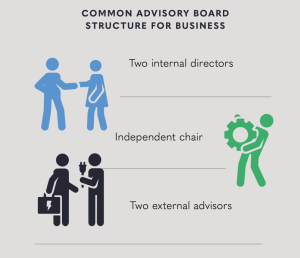
Fundamentals
What are Advisory Boards Roles & Responsibilities?
Explore the fundamentals of understanding the roles and responsibilities of advisory board members.
Fundamentals
Published 25 August 2020
The ABF101 Advisory Board Best Practice Framework™ has been carefully developed to respect and support the balance required between purpose, people and process to create a strong foundation to advisor engagement.
The ABF101 Framework is based on five key principles –clarity of scope, independence and fit-for-purpose, measurement, structure and discipline.
Let’s explore the “Independence” principle.
On the surface, independence as one of the foundational principles to an advisory board may seem contradictory. The definition of independence says “freedom from the control, influence, support, aid, or the like, of others.”
What is the Advisory Board for it not to provide support, aid, “or the like” to an organisation?
Within the ABF101 Framework, Independence and fit-for-purpose principles underpin the advisory board’s PEOPLE section. Within this, the independence principle states, “the advisory board has independent, diverse representation.”
It is valuable to consider and critically assess what “independent and diverse representation” means within the context of a particular organisation and the purpose of its advisory board. The ABF101 Framework principles are not intended to be applied or assessed in isolation.
The ABF101 Framework provides a balanced approach to advisory board structures. It recognises the balance necessary for defining a purpose that is unique to the organisation, applying good governance of people and processes. It enables an organisation to effectively draw on the skills and experience of people in a way that supplements skills within an organisation.
Advisory boards are most often used as a mechanism to gain strategic insight and advice to support critical thinking and robust discussions for organisational leaders. Decision-making and ownership of the outcomes rest with the organisation. Best practice advisory boards are a problem-solving model as opposed to a decision-making model.
Creating a clear separation of the advisory board’s role, both separate to governance and operations, is one application of independence. Additionally, when considering the people that form the advisory board, there is benefit in also applying the Independence principle.
Within the SME sector, research from the advisory board selection study report found that the most common structure for commercial advisory boards included 2 internal directors or business representatives, an Independent Chair and 2 external advisors.

State of the Market Report 2021 – Advisory Board Centre
Corporatised Advisory Boards in larger organisations and advisory boards designed to engage stakeholder representation often include more participants. For example, the recent West Australian Government State Recovery Advisory Group included Government representatives and 24 leading business, industry and social groups.
The inherent flexibility of advisory boards makes them an adaptable structure to fit the needs of any organisation. Ensuring that there is independence, grounds the advisory board and provides a strong foundation allowing for impact and risk management aligned with the advisory board’s purpose.
A well-crafted, comprehensive advisory board charter can outline the scope of the advisory board and detail the framework for assessing and appointing independent advisory board members.
Advisory Board Certified Chairs have undertaken specialised development to assist organisations to evaluate their options and develop advisory board protocols, including a Charter, that consider the independence of the organisation and advisory board participants.
If you are a business and would like to tap into this and learn more about how advisor engagement could benefit your business, email: [email protected]
Interested in learning more about best practice for advisory boards and professional advisors? Download your complimentary copy of the ABF101 Advisory Board Best Practice Framework™. In addition, you can gain a micro-credential in the Advisory Board Technical Foundations Program, which is a fully supported online program that is self-paced and can be done at any time to understand how advisory boards technically work, elevating your skills and lifting you in your role as an advisor.